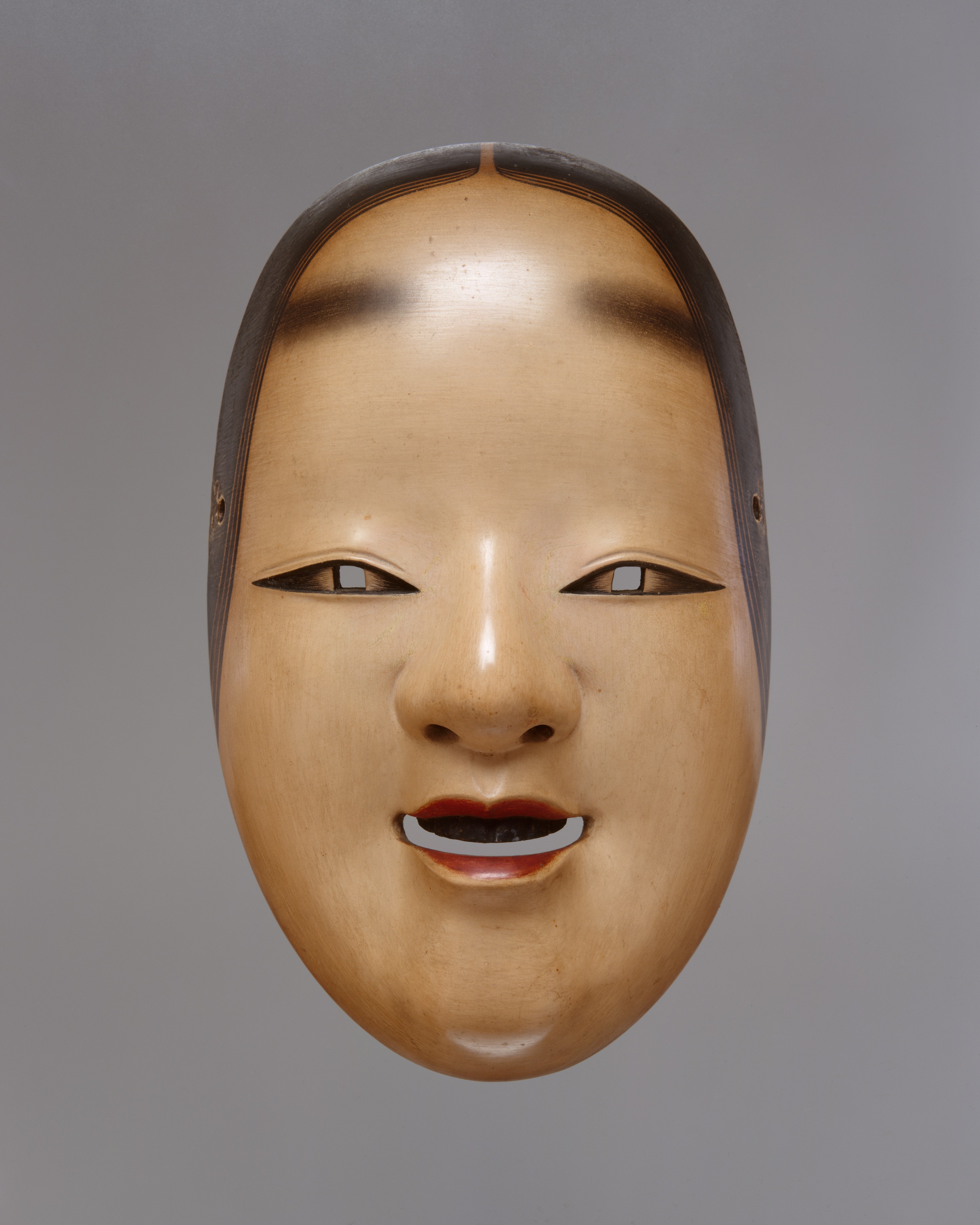Ko-omote Noh Mask
Not on view
Ko-omote (literally “small face”) Noh masks are used for main or secondary roles, of either a young girl or a supernatural being. Inspired by Heian-period (794–1185) aristocratic style, the face is painted white, with shaved and painted eyebrows, neatly combed hair, and black-dyed teeth. The mask conveys the idea of innocent beauty.
This image cannot be enlarged, viewed at full screen, or downloaded.
This artwork is meant to be viewed from right to left. Scroll left to view more.



